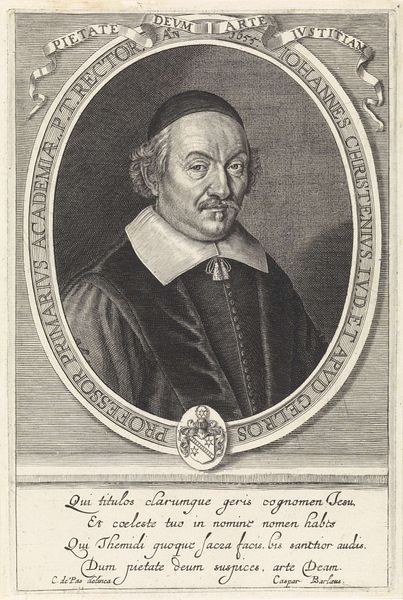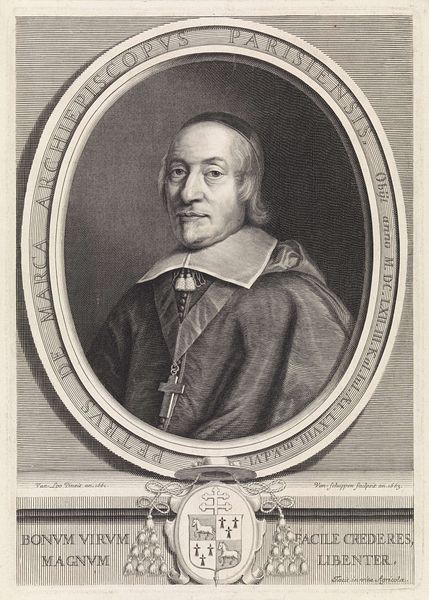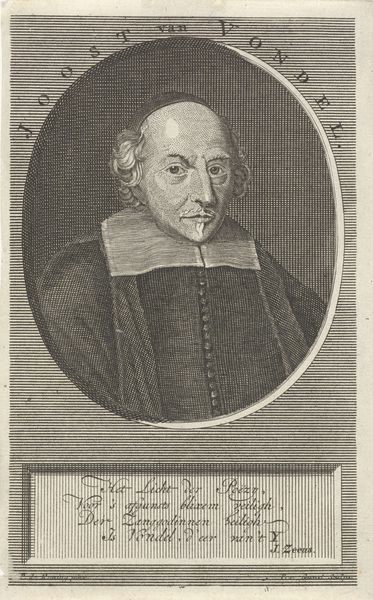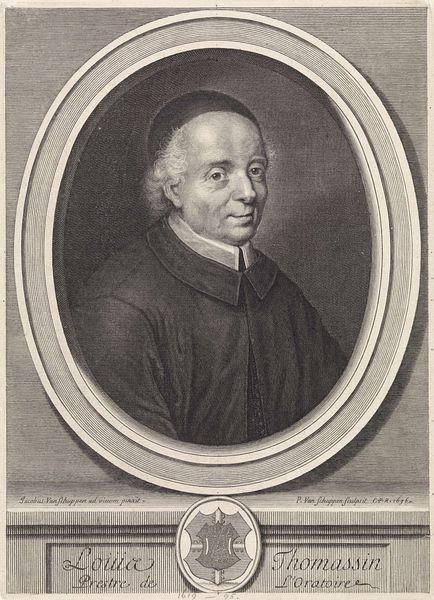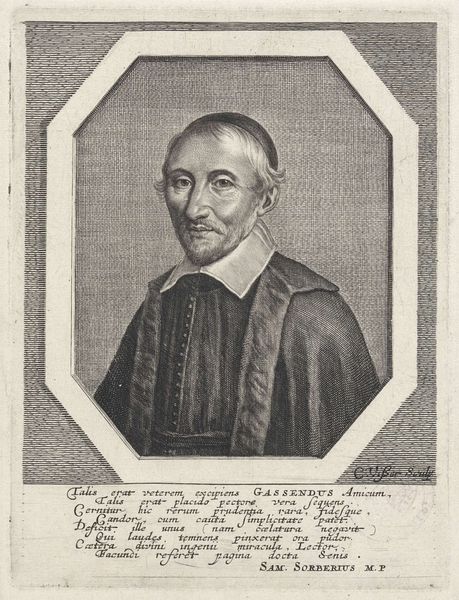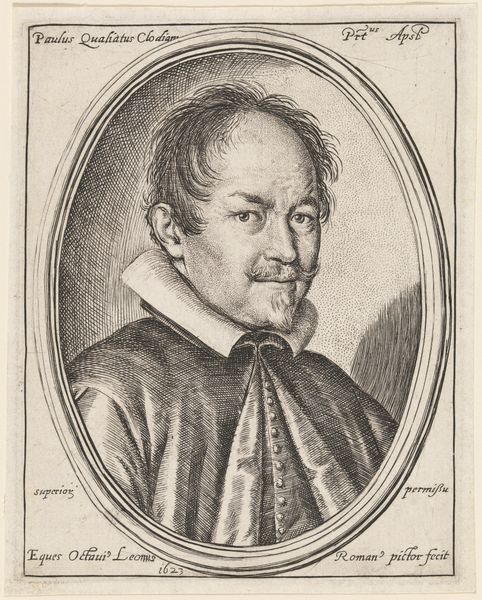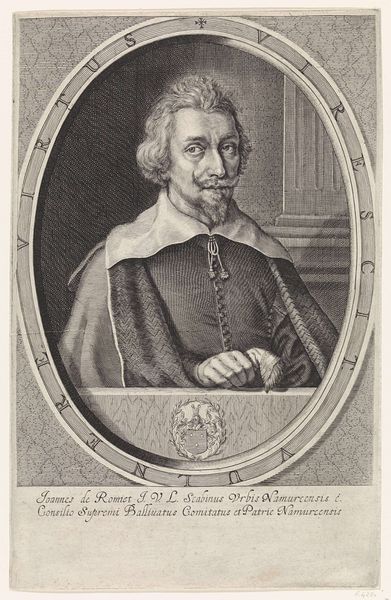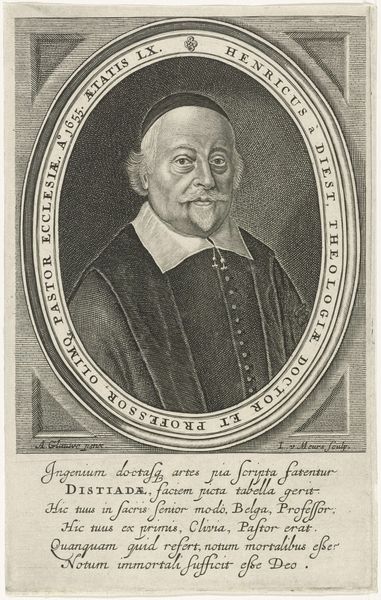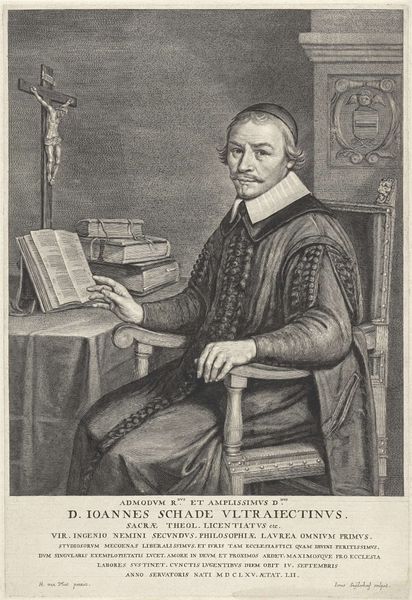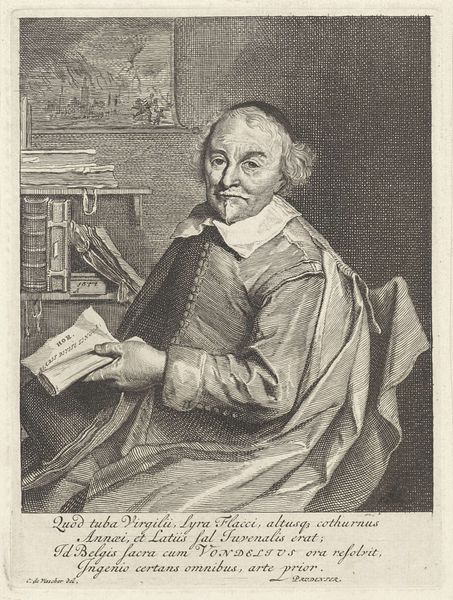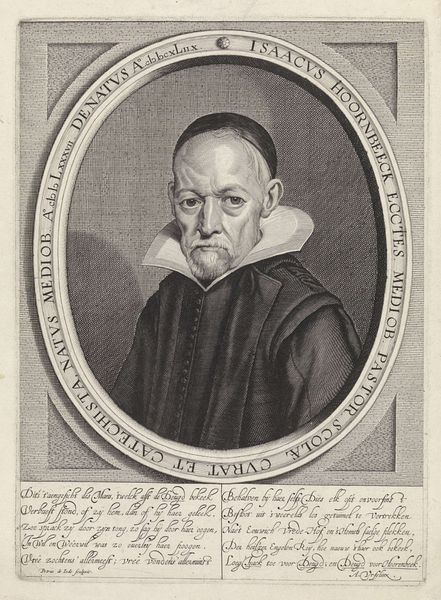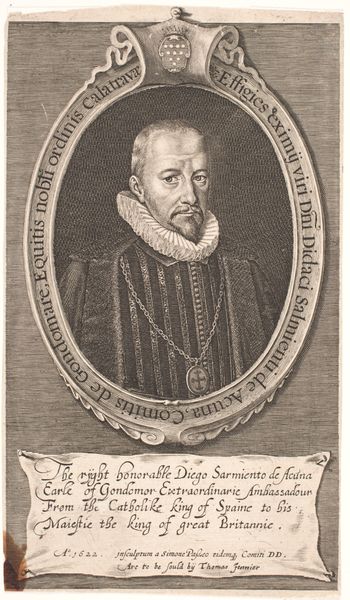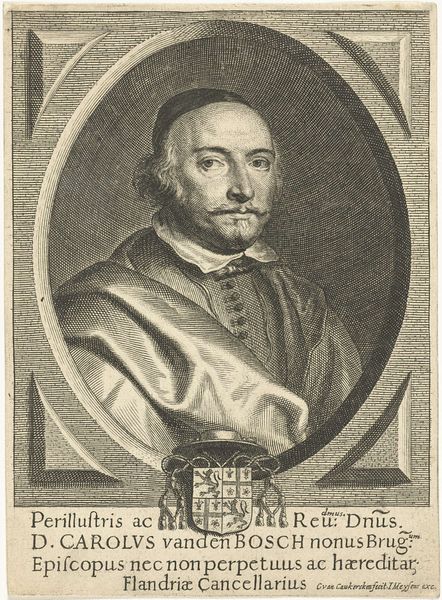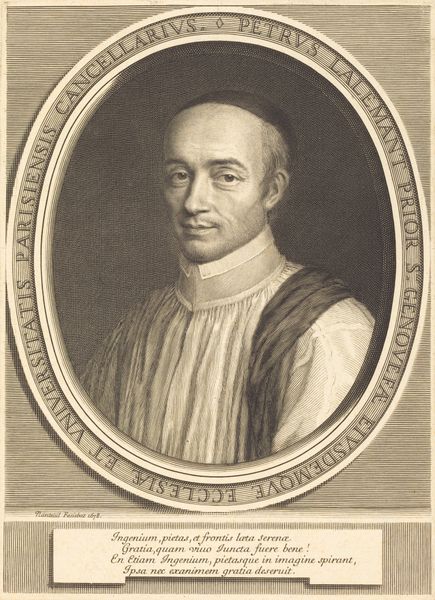
print, intaglio, engraving
#
portrait
#
baroque
# print
#
intaglio
#
old engraving style
#
historical photography
#
portrait reference
#
portrait drawing
#
engraving
Dimensions: height 297 mm, width 202 mm
Copyright: Rijks Museum: Open Domain
Curator: Standing before us is a print, specifically an engraving, dating sometime between 1650 and 1676. It's titled "Portret van Johannes Spangius" and was created by Theodor Matham. Editor: My immediate reaction is the oval frame; it softens what might have been a severe depiction. The density of line work gives it a somber gravitas despite that shape. Curator: Yes, that oval is quite deliberate, containing Latin inscriptions that speak to Spangius’s virtues and age. It's fascinating how the frame becomes a part of the portrait itself, shaping the reception. Spangius was clearly someone of significance in his community. The Baroque style situates this work within a broader European context. Editor: Looking closely, I’m struck by the way Matham uses contrasting line weights. Look at the face compared to the dark jacket. There is great depth to the portrait, creating visual interest without relying on color or a great variance of light and shade, really drawing attention to the hands and his face. Curator: These commissioned portraits were vital in constructing and disseminating the image of important public figures, reinforcing social hierarchies and cultural values. We see how these images were powerful tools. What do you make of his gaze? Editor: Directly confronting, yet a hint of melancholy… Notice the small book in his hand. The formalist reading interprets such books to give a certain intellectual weight or attribute other desired details from the artist's patrons. How fascinating, I wonder, how it may tell us more about Spangius and his views. Curator: Portraits like this serve as historical documents, capturing not just a likeness, but also aspects of social status and identity construction within 17th-century Dutch society. It's really an opportunity for broader contextual investigations. Editor: Analyzing the use of line in creating light and shadow certainly enriches the context provided about Spangius and his era. Curator: Exactly. Seeing this engraving is about connecting form to function and understanding its role in shaping collective memory.
Comments
No comments
Be the first to comment and join the conversation on the ultimate creative platform.
